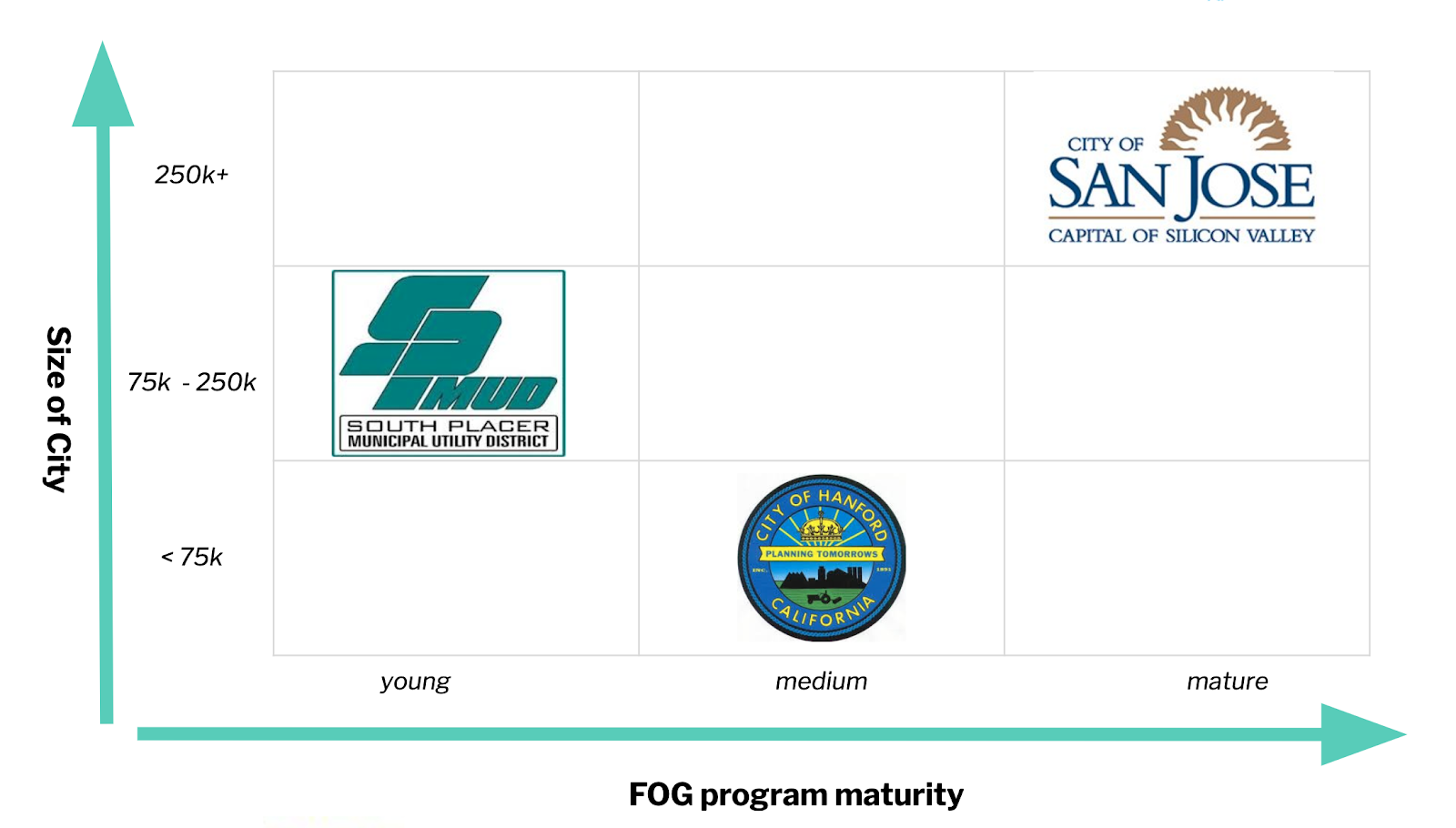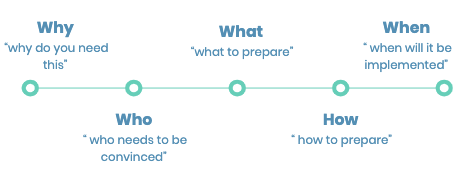FOG program managers and inspectors often see the value in implementing new technologies to push their wastewater compliance forward but hit a wall when trying to convince upper management of the need. We hear about this type of roadblock so much that we decided to interview a few current customers to learn about their path to implementing SwiftComply FOG.
Participants
Our interviewees are all California-based but fall into varying categories of size and program maturity. Our goal was to hear from different programs so one of them would resonate with where your FOG program currently sits:

City of Hanford
FOG producing businesses: 150
Staff: .25 Full Time
Interviewee: April Garza, Regulatory Compliance Analyst
South Placer Municipal Utility District
FOG producing businesses: 250
Staff: .75 – 1 Full Time
Interviewees: Eric Nielsen, District Engineer; Aaron Moore, Inspector II
City of San Jose
FOG producing businesses: 2400
Staff: 4 Full Time
Interviewee: Mary Morse, Senior Environmental Inspector
Questions
The questions we asked our participants can be used as a guideline for how to approach your program:
Why do you need this?
Who needs to be convinced?
What should we prepare?
How do we prepare?
When will it be implemented?

Interviews
Why do you need SwiftComply?
City of Hanford
FOG falls as one of the multiple responsibilities under a pretreatment position, so April only had time to visit locations approximately once per year. She wanted a way to collect data about pump out services year-round and prioritize the limited time resources towards visiting non-compliant locations first.
South Placer Municipal Utility District
The district was going through a sewer code revision and agreed a software program would be necessary to successfully track and run the updated FOG requirements. After trying to configure existing asset management software used by other departments, Eric and Aaron realized there were too many gaps and the FOG program required a more specialized system.
City of San Jose
Based on data gathered in the previous year, over 80% of the violations issued were due to missing or incomplete records. They already had on-premise software to track the general database and record inspections, but Mary wanted a way to receive complete pump out manifests from FSEs and service providers digitally to improve records accuracy and reduce NOVs.
Who did you have to convince?
City of Hanford Department Manager
South Placer Municipal Utility District Board of Directors.
They needed to understand why the legacy asset management software didn’t meet requirements.
City of San Jose Finance department.
After discussing options with their finance department, Mary was able to determine that a pilot would be the best way to get a new system off the ground. Pros of the pilot included:
– Didn’t have to wait for procurement / specific time of year
– Could use cost savings from other areas in lieu of requesting new budget
– Avoided formal bid process
What did you prepare?
City of Hanford Cost and functionality comparison of the top two products. This included the following steps:
– Determine the scope of project/program needed
– Research options
– Schedule vendor demos
– Reach out to other agencies using systems for recommendations
South Placer Municipal Utility District Cost and functionality comparison of the top two products. They also wanted to highlight business-friendly solutions.
City of San Jose Justification to purchase the pump out data from SwiftComply and anticipated return on investment (ROI). Their hypothesis was that receiving pump-outs digitally would provide broader reach to monitor the system without expanding the department personnel.
How did you know what to prepare?
City of Hanford April had previous experience purchasing new lab equipment.
South Placer Municipal Utility District The Board of Directors was helping to drive initiative and worked closely to advise the team.
City of San Jose Mary didn’t know! She spent time with her finance department and budget analyst to learn the pros and cons of a few different options. These included:
Request for Proposals/Bids (RFP/B)
– An open process which can be a very slow process but it more defensible if there are objectives
Sole Source Justification
– Used when there is only one vendor to fulfill requirements. This can be quite research-heavy for the agency but offers a guaranteed selection of the preferred vendor.
Pilot
– The City of San Jose encourages pilots to push programs forward without long-term commitments. Going this route with a 2-year pilot she was able to start the program sooner and will determine how to move forward once the pilot conclusion nears.
When was it implemented?
City of Hanford July 2018, four months after meeting SwiftComply at a conference.
South Placer Municipal Utility District February 2019, two years from the start of their sewer use revisions. During this time they tested and rejected the legacy software.
City of San Jose May 2019, three years from initial interest. Even with the pilot option it took longer than expected due to understaffed finance department and changing personnel.
Any final words of wisdom to share?
City of Hanford: Go for it! The process was simple for our department.
South Placer Municipal Utility District: Eat the elephant one bite at a time. Be patient and celebrate small victories.
City of San Jose: Don’t be afraid of failure. No matter the outcome you’re going to learn more about the needs of your program and the community it serves.
Our final words of wisdom? We see the most success in programs with a clear goal from the start, champion in the department, and a plan to demonstrate return on investment.
Enhance Your Compliance Program with SwiftComply
If you’re involved in the wastewater industry managing FOG or Industrial Pretreatment compliance and want to maximize your resources, reach out to our team to discover how our solutions can support your program.
